It’s early spring and I’m pushing a wheel barrel full of dead leaves and stems collected from a garden bed to dump into the woods. I discard the refuge, and as I turn around and glance down there it is — a single Red Trillium in full bloom among old withered weeds. It looks tropical, almost out of place in these New England woods. This is one of our many spring wildflower gems.
Red Trilliums are one of our favorites. They appear in the woods and woodlands edges, usually a single plant in moist areas that get dappled sunlight. The deep red flower stands out from the backdrop of large, emerald-colored leaves. As beautiful as they are, they’re easily overlooked. An individual plant can sprout from a heavily leaved and brushy area. It’s easy to miss them, especially when the flower is not facing you.
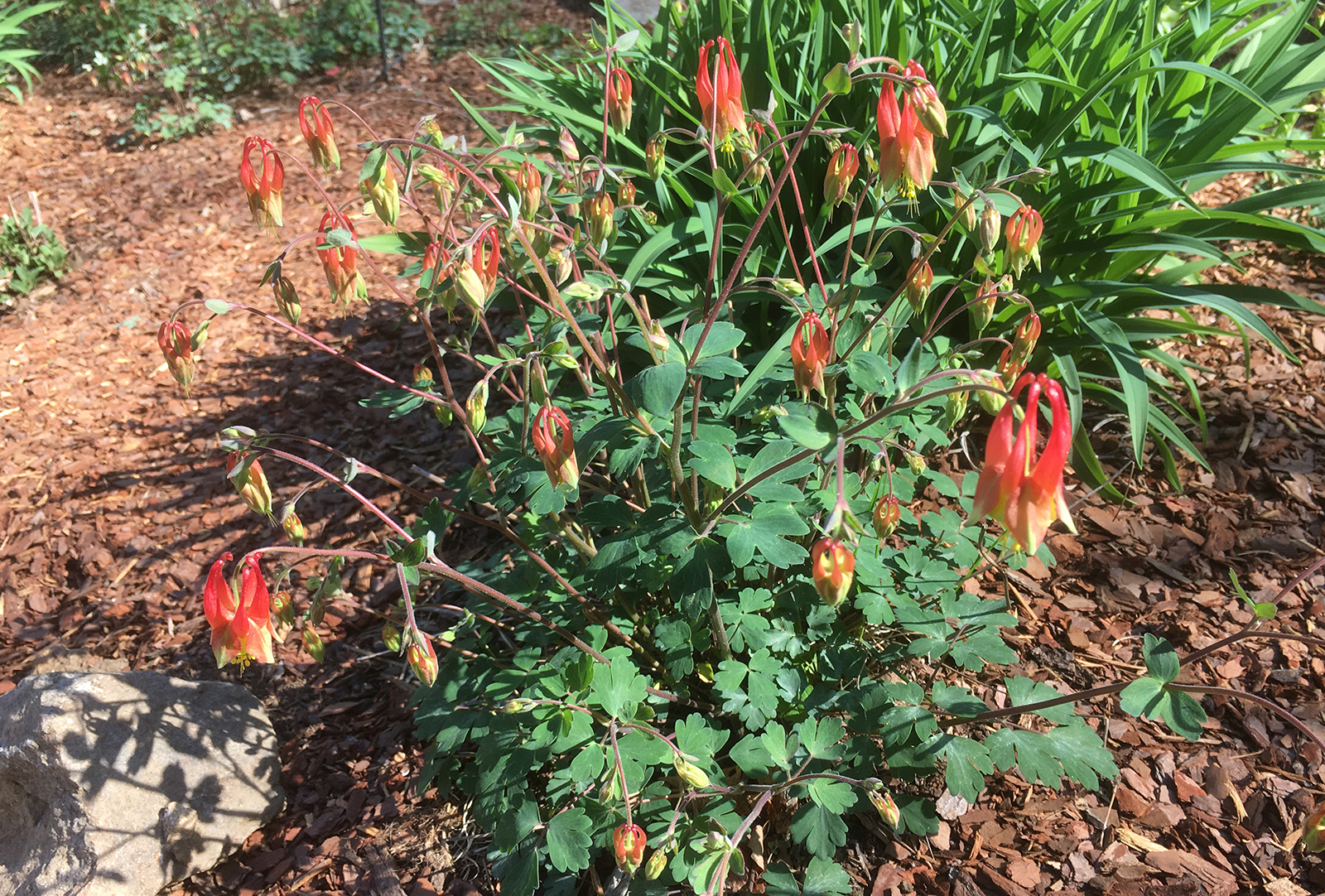
Wild Columbine thrives in many of our flowerbeds — reseeding and growing where they will. Their compact form, blue green leaves and drooping red and yellow flowers are a three-season asset to our gardens. Almost to the day of their first blooms, we can expect the arrival of migrating Ruby-throated Hummingbirds feeding on the flower’s nectar.
The spring wildflowers, both in our yard and in the woods surrounding us, are small, care-free, beautiful plants that come back year after year. They appear in places you wouldn’t expect — rocky areas, shady spots and tough, infertile soils. Some are fast spreading plants like Ajuga, Mustard and Garlic Mustard plants that need to be managed to prevent them from encroaching on other plants or grass.
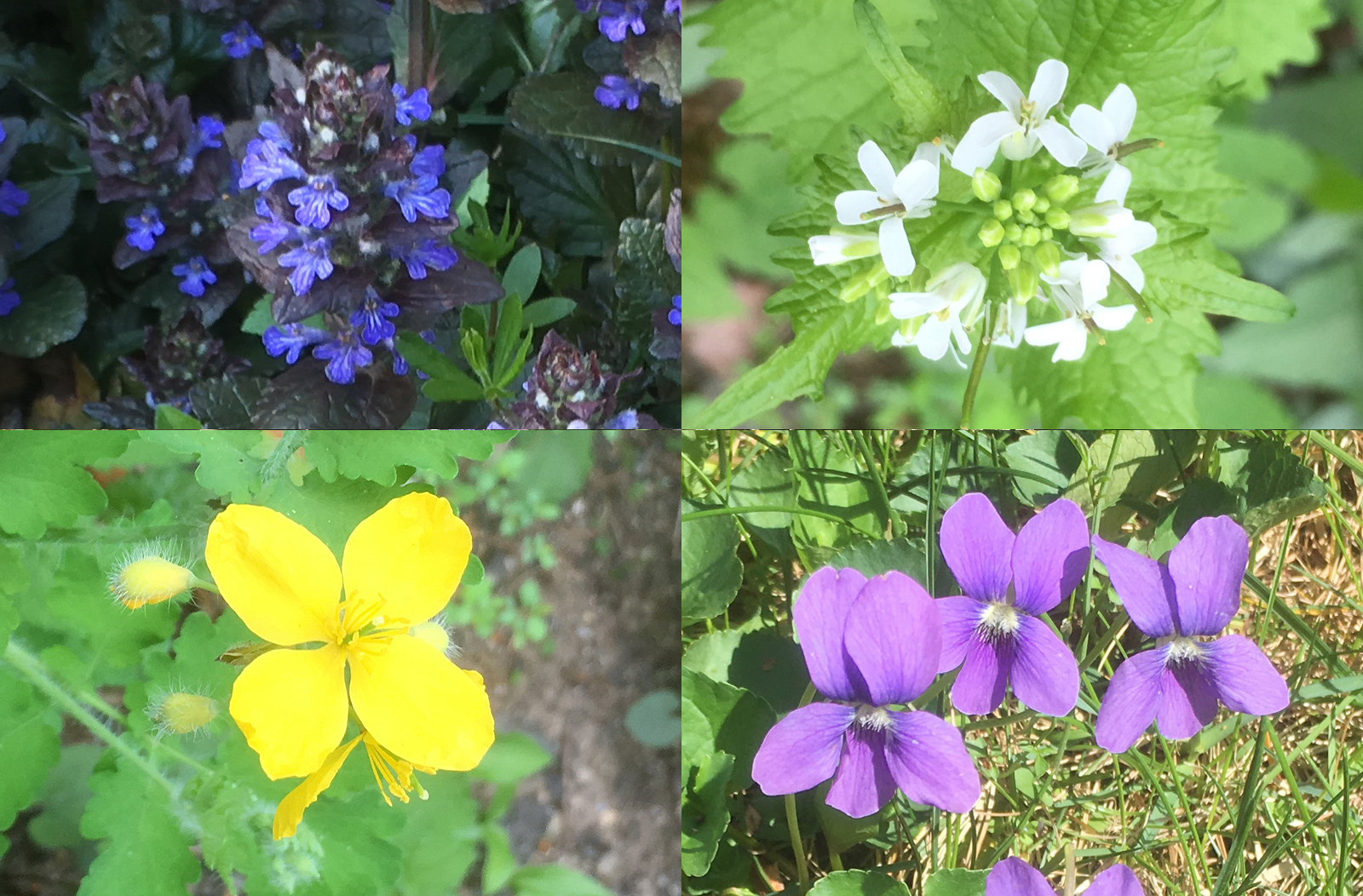
Bluets and Violets are small gems that grace our yard with their early spring blooms. Bluets show up in the lawn and grassy walkways as individual plants with a cluster of tiny flowers. Violets, in various shades of purples and white, cover large portions of our lawn and woodland edges. I purposely avoid these small flowers during my first few lawn cuttings in early spring so we can enjoy the color for as long as possible.
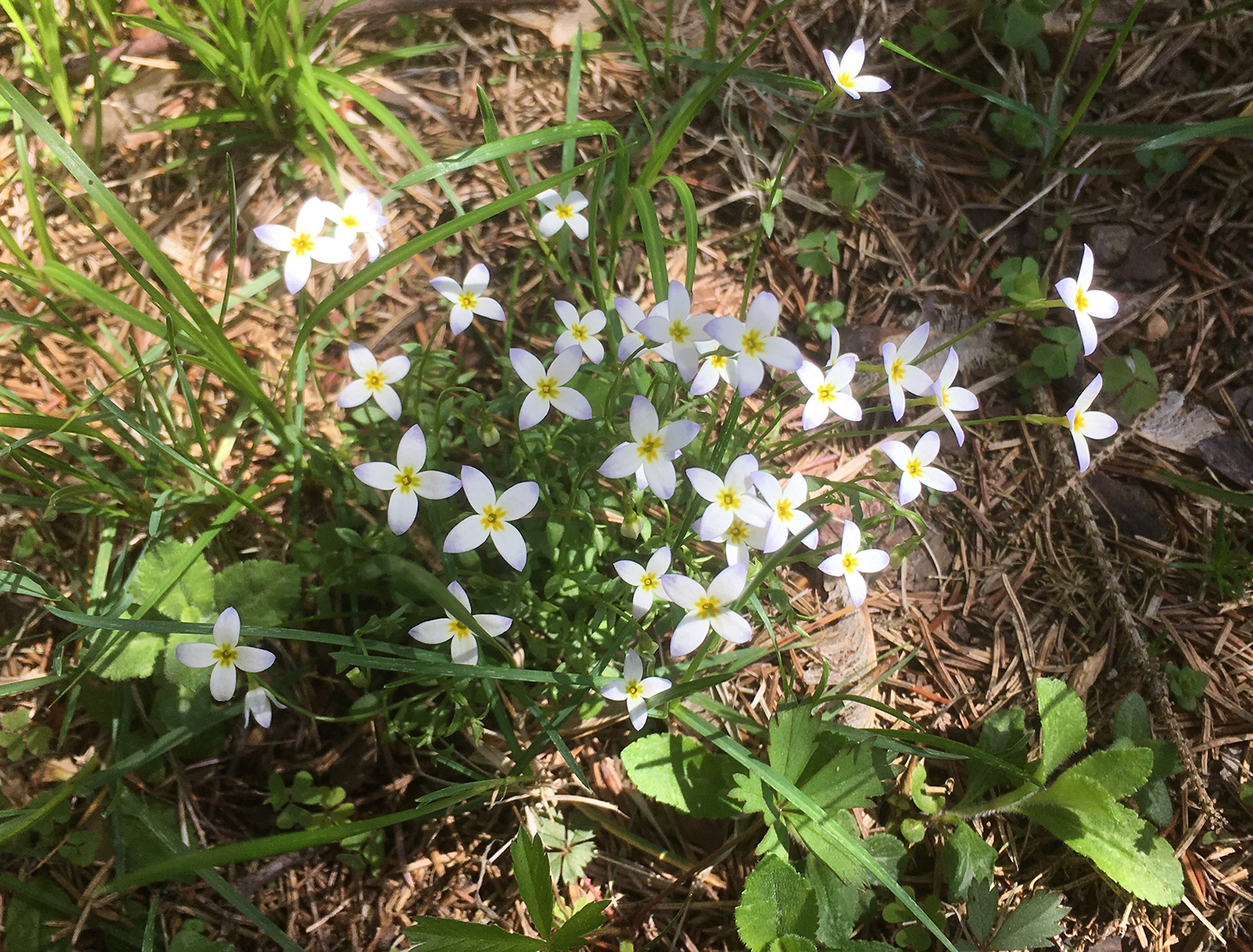
Dandelions, common weeds that can quickly take over a lawn, are actually a vital spring food source for many types of bees, including the Honeybee. We hand-remove about half of them from our front lawn every year but let them grow untouched in other parts of the yard. While I rarely see bees on Violets, Bluets and other early blooming wildflowers, there seems to be a never-ending variety of them on the bright yellow Dandelions.
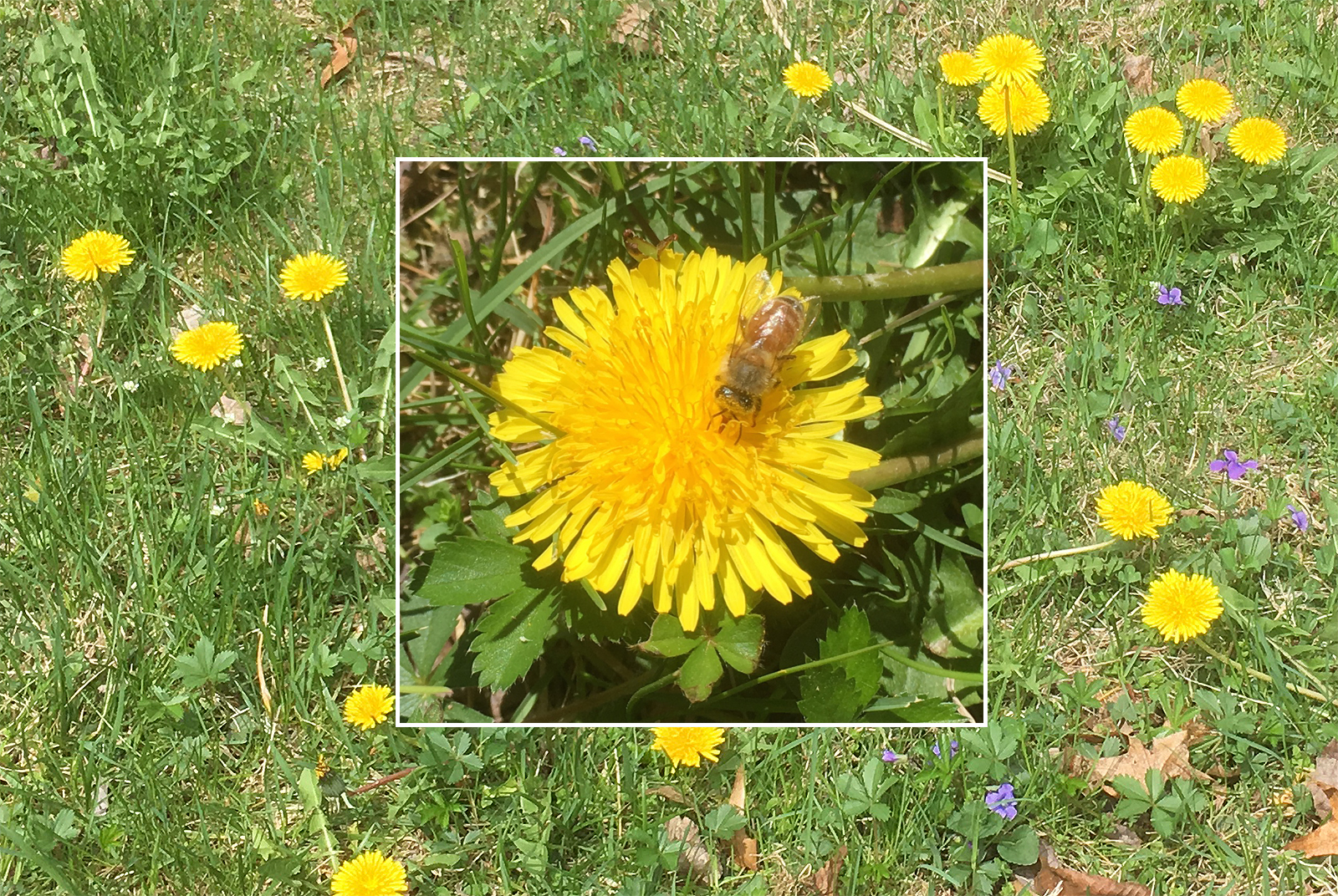
The next time you’re in your yard take the time to examine it closely. You might be surprised at how many spring wildflower gems you discover.
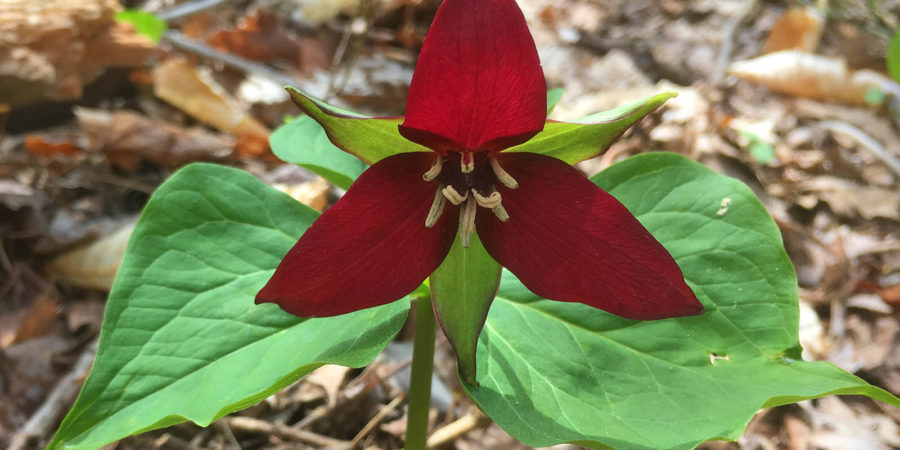
Interesting article- I won’t be removing all those dandelions now! And also will hunt for some hidden spring blossoms along our wetlands border.